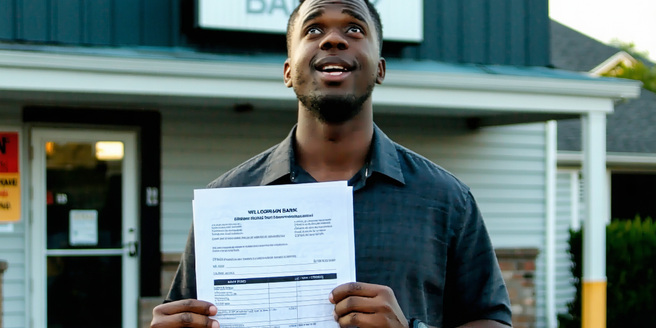
Understanding Poor Credit Loans
| Loan Type | Key Features | Borrower Considerations |
| Payday Loans | Short-term, fast access | High interest rates |
| Secured Loans | Collateral required | Risk of asset loss |
| Personal Installment Loans | Monthly payments | Better for budgeting |
| Credit Builder Loans | Helps improve credit | Funds inaccessible until repaid |
| Peer-to-Peer Loans | Offered by individuals | Varied interest rates |
Who Can Benefit from Poor Credit Loans?
Individuals with less than stellar credit scores often find themselves locked out of traditional lending markets. Poor credit loans present an opportunity for such individuals to gain access to much-needed funds. They serve as a financial lifeline for those facing sudden expenses like medical bills or emergency car repairs. For many, these loans may be their only viable option in times of financial distress. Even individuals working to rebuild their financial standing utilize these loans as a stepping stone. By consistently meeting payment obligations, borrowers can gradually enhance their credit profile, eventually making them eligible for better financial products with more favorable terms. Therefore, poor credit loans serve not only as a short-term solution but also as a strategic tool for long-term financial improvement.
Types of Poor Credit Loans Available
The landscape of poor credit loans offers a variety of options catering to different needs and financial situations. Payday loans, although a quick fix, come with high interest rates and need to be repaid quickly. Secured loans use collateral such as a car or home, making them a lower risk for lenders and often offering better rates. On the other hand, choosing the right type of loan requires careful consideration of one’s financial capability and repayment plan. Personal installment loans allow for gradual repayment, aligning monthly dues with income cycles. Credit builder loans, meanwhile, use locked savings accounts to encourage disciplined repayment, improving credit scores over time. Peer-to-peer loans, offered by individuals rather than institutions, offer unique terms and varied rates, providing a more personalized lending experience.
Eligibility Criteria for Poor Credit Loans
Eligibility criteria for poor credit loans can differ widely based on the lender and the loan type. Generally, borrowers need to provide proof of stable income and employment, demonstrating their ability to repay the loan. Although credit scores are less significant, a certain minimum score may still be required. Some lenders consider current debt-to-income ratios, ensuring borrowers do not overextend their financial obligations. In some cases, lenders might also look at the length of credit history to better understand a borrower’s financial behavior. Additionally, lenders may assess the borrower’s financial history to gauge their financial responsibility. Secured loans require pledging collateral, whereas unsecured options may require a co-signer. Verifying personal identification and residency status is another common requirement in the application process, enforcing responsible lending and minimizing fraud risks.
How Poor Credit Loans Help Improve Credit Score
Poor credit loans can serve as an essential tool in rehabilitating one’s credit score. When borrowers make timely payments, their credit history reflects these positive behaviors, gradually increasing their credit rating. Consistently improving one’s financial habits can have a lasting impact on overall creditworthiness. With dedication and discipline, anyone can achieve a better financial standing. A higher credit score unlocks future opportunities for credit at more favorable terms. Poor credit loans also diversify one’s credit mix, which accounts for a portion of a credit score. By demonstrating responsible credit management across various types of credit, individuals can elevate their financial profile. It’s crucial, however, for borrowers to use these loans thoughtfully, avoiding default to ensure their credit score ends up benefiting.
Comparing Interest Rates: Poor Credit Loans vs. Traditional Loans
Interest rates serve as a pivotal factor differentiating poor credit loans from traditional loans. Poor credit loans generally come with higher interest rates due to the increased risk of lending to individuals with troubled credit histories. Lenders cautiously set these rates to hedge against potential defaults. This highlights the need for borrowers to improve their financial habits to access better terms in the future. In contrast, traditional loans, reserved for consumers with good credit scores, offer more favorable rates since lenders perceive these borrowers as lower risk. Understanding this difference highlights the importance of strategically using poor credit loans for short-term needs while working towards qualifying for traditional loans, which can ultimately lead to significant savings in interest over time.
Top Tips for Managing Poor Credit Loans
Managing poor credit loans requires strategic planning and financial discipline. First, borrowers should assess their financial situation to determine what they can truly afford without compromising daily living expenses. Crafting a detailed budget and sticking to it helps ensure that monthly payments are made on time. It is also beneficial for borrowers to explore options such as debt counseling services that can provide professional guidance. Setting up automatic payments can prevent missed payments, which could further harm one’s credit score. Borrowers should also be on the lookout for any hidden fees or penalties that could inflate the loan’s total cost. Finally, keeping an open line of communication with the lender can help address any difficulties and renegotiate terms if necessary.
Common Misconceptions about Poor Credit Loans
Several misconceptions surround poor credit loans, deterring potential borrowers from even considering them. Many believe these loans trap individuals in cycles of debt due to high interest rates. In fact, understanding the terms and conditions is crucial to making informed borrowing decisions. It is essential for borrowers to do thorough research and compare options to find a loan that best suits their needs. While some predatory lenders exist, reputable lenders are committed to supporting credit rehabilitation. Another myth is that poor credit loans are synonymous with payday loans. In reality, a wide variety of loan types exist, including personal installment loans and credit builder loans. Additionally, some consumers wrongfully assume that these loans cannot improve credit scores, but responsible use and timely payments can actually contribute to credit recovery over time.
Navigating the Application Process for Poor Credit Loans
Successfully navigating the application process for poor credit loans involves several key steps. First, individuals need to research and compare potential lenders to find those offering the most favorable terms. Gathering necessary documentation, such as proof of income and identification, expedites the process. Seeking advice from financial advisors can also provide valuable insights. It’s essential to work on improving your credit score alongside applying for loans, as this can open up more options in the future. It’s also crucial to carefully read the loan agreement, understanding all terms and conditions before signing. Being aware of the interest rate, repayment duration, and any associated fees ensures there are no surprises later. Finally, discussing potential questions or concerns with a lender can provide clarity and confidence in the decision-making process.
Real-Life Success Stories: Overcoming Challenges with Poor Credit Loans
Real-life success stories highlight the transformative potential of poor credit loans when managed wisely. For instance, one borrower, struggling with unexpected medical expenses, utilized a personal installment loan to cover costs, diligently repaying it over a year. This was a crucial step in their financial recovery process and set them on a path to healthier credit habits. As a result, their improved credit score led them to qualify for a lower interest rate mortgage. Another individual used a credit builder loan to transition from a thin credit file to a robust profile, unlocking access to higher credit limits and better financial opportunities. Both examples underscore the role of poor credit loans as a catalyst for overcoming financial hurdles and fostering long-term creditworthiness.

